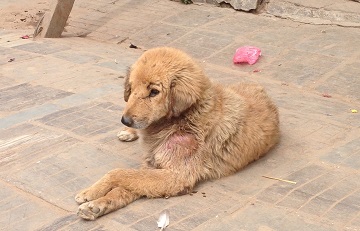September 28th is World Rabies Day and we thought it worthwhile to acknowledge the event with some reminders on how to manage a potential rabies exposure – what to do in the way of first aid and what medical treatment should involve – as a well as sharing a link to a recent article in the guardian online.
The story we wanted to share was written by a young woman who survived rabies infection – an extremely rare occurrence unfortunately. The young woman’s name is Jeanna Giese and the piece: Experience: I was bitten by a rabid bat
I had become the first known person ever to survive rabies without a vaccination, and the treatment became known as the Milwaukee protocol.
It is important, however, to point out that the Milwaukee Protocol has been attempted many times since it was published, with little or no success. It is thought that Jeanna’s case was caused by a less virulent strain of bat rabies virus that allowed her immune system to mount a vigorous, early immune response. There have been similar other rare cases of survivors, with or without treatment, usually infected with bat variant rabies virus.
Things to know about rabies
Rabies is present in almost every country on earth, but most human cases occur in South Asia – particularly India. While dogs are responsible for most of the estimated 55,000 deaths each year, virtually any mammal can carry the virus, typically passing it on by biting another animal – or a person.
When you’re overseas, patting, feeding or even approaching animals – domestic or wild, healthy, sick or injured – is problematic: The virus is always fatal once its symptoms manifest themselves so you can’t ignore a potential exposure.
You know all this, right? Well, here are a few things you might not know about rabies…
You don‘t have to be bitten to get infected – Though rare, transmission can occur through infected saliva contacting the mucous membranes of your nose or eyes, or via a lick on a scratch or other break in the skin.
Infection isn’t immediate – After multiplying in the wound, the virus inevitably reaches nerve tissue. It then travels via the nervous system to the brain, where it continues to multiply with progressively more gruesome and painful clinical symptoms. If rabies post-exposure prophylaxis (PEP) is administered before the virus enters the nervous system, death can be prevented.
Animals may not appear rabid – The Hollywood image of a dog foaming at the mouth is a far less common sign of rabies than sudden, unexplained paralysis or a change in behaviour. A friendly cat may suddenly be very aggressive, while a normally playful puppy becomes shy and withdrawn. Not eating, eating strange (non-food) objects, pawing the mouth, appearing to choke, difficulty swallowing, chewing the bite wound, seizures, hypersensitivity to touch or sound are among the other sign an animal is infected.
Rabies incubation periods can vary – It usually takes 3-8 weeks for the rabies virus to incubate, but human cases have ranged from just days to years. That’s why it is important to receive post-exposure prophylaxis (PEP) as soon as possible and start within 48 hours. If medical care was not sought at the time of the bite it is still possible to get PEP well after the potential exposure, because if the incubation period is at the protracted end, the PEP may still be effective.
Rabies is 100% preventable
While it’s 100% deadly, rabies is also 100% preventable. But, a series of steps needs to be taken in the right order to prevent infection.
1 – The wound needs to be cleansed thoroughly with lots of soap and water.
2 – If available, alcohol or iodine (such as betadine) should be applied. The wound should be covered with gauze to prevent infection (but not bound), or left uncovered.
3 – It is critical to seek expert medical attention as soon as possible. (Don’t wait for confirmation that the animal was infected. That could take days – even weeks.) It’s important to find a medical facility experienced in rabies treatment that stocks (or can obtain quickly) both Human Rabies Immune Globulin (HRIG) and the first dose of rabies cell culture vaccine. Injected at the site of the wound, HRIG contains rabies antibodies that immediately inactivate and control the rabies virus until the vaccine begins to work.
4 - Have a tetanus booster, if one is required.
5 - Observe the wound for redness and discharge. Bacterial infection may occur after animal bites and antibiotics may be required.
Vaccination provides lifelong protection
Discuss pre-travel rabies vaccination with your travel doctor or GP if you are:
– Travelling to a rabies-endemic country, irrespective of length of stay. Children in particular are at greater risk.
– Planning to live and work overseas in a rabies-endemic country.
– Wanting the protection that immunisation offers.
The course of rabies vaccine is relatively expensive. On the plus side, no booster is required unless you will be at risk of regular exposure through your occupation, or if indeed you have an exposure.
The advantages of pre-exposure vaccination are:
- If bitten or potentially exposed to the virus you will need only 2 injections over 3 days, not the 4-5 over 14-28 days required if you haven’t been vaccinated.
- The HRIG is not necessary, greatly simplifying treatment after a potential exposure. (HRIG is notoriously difficult to obtain overseas and always very expensive when you can.)
For regular travellers, rabies vaccination is a life-long investment in peace-of-mind travel.

